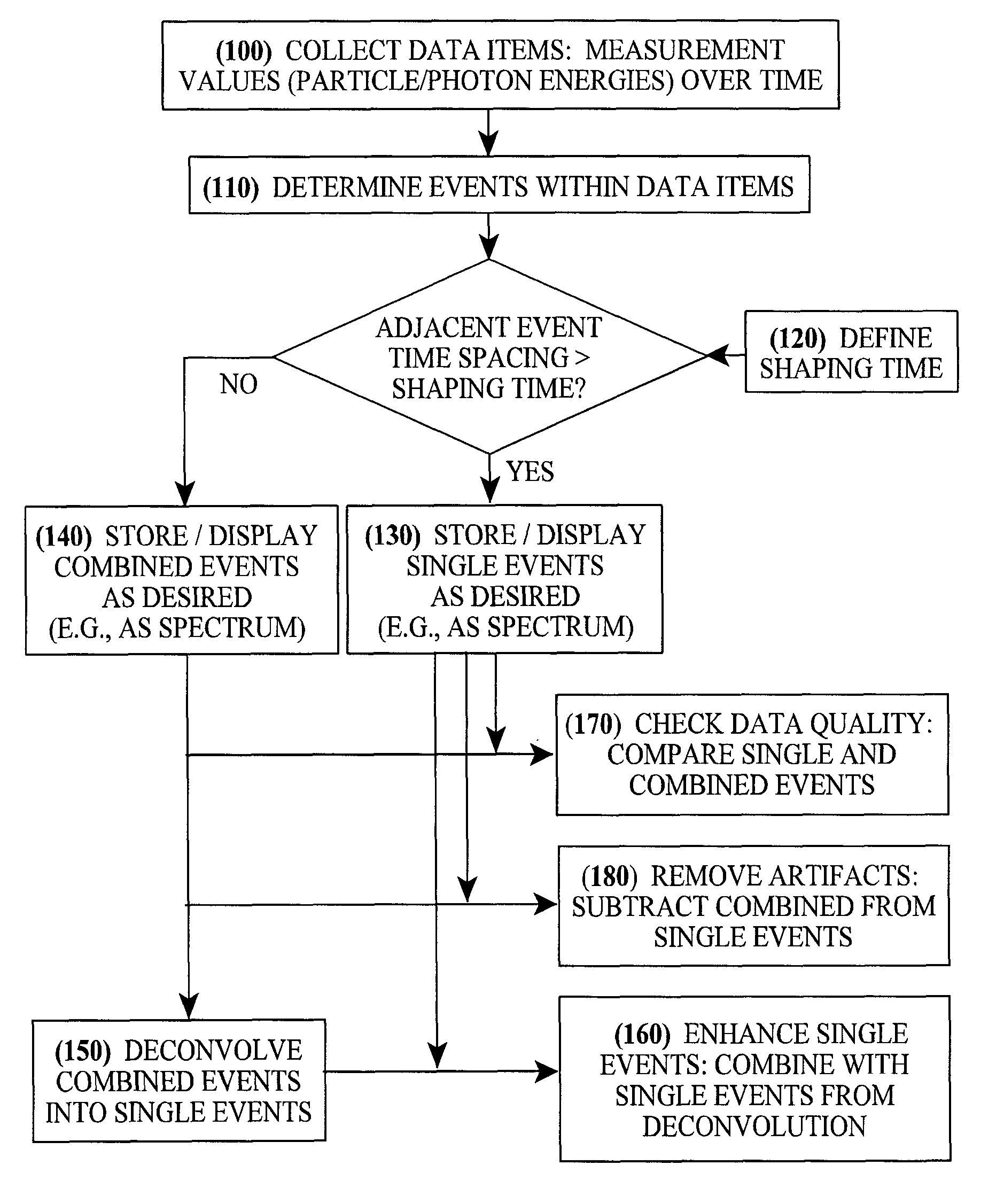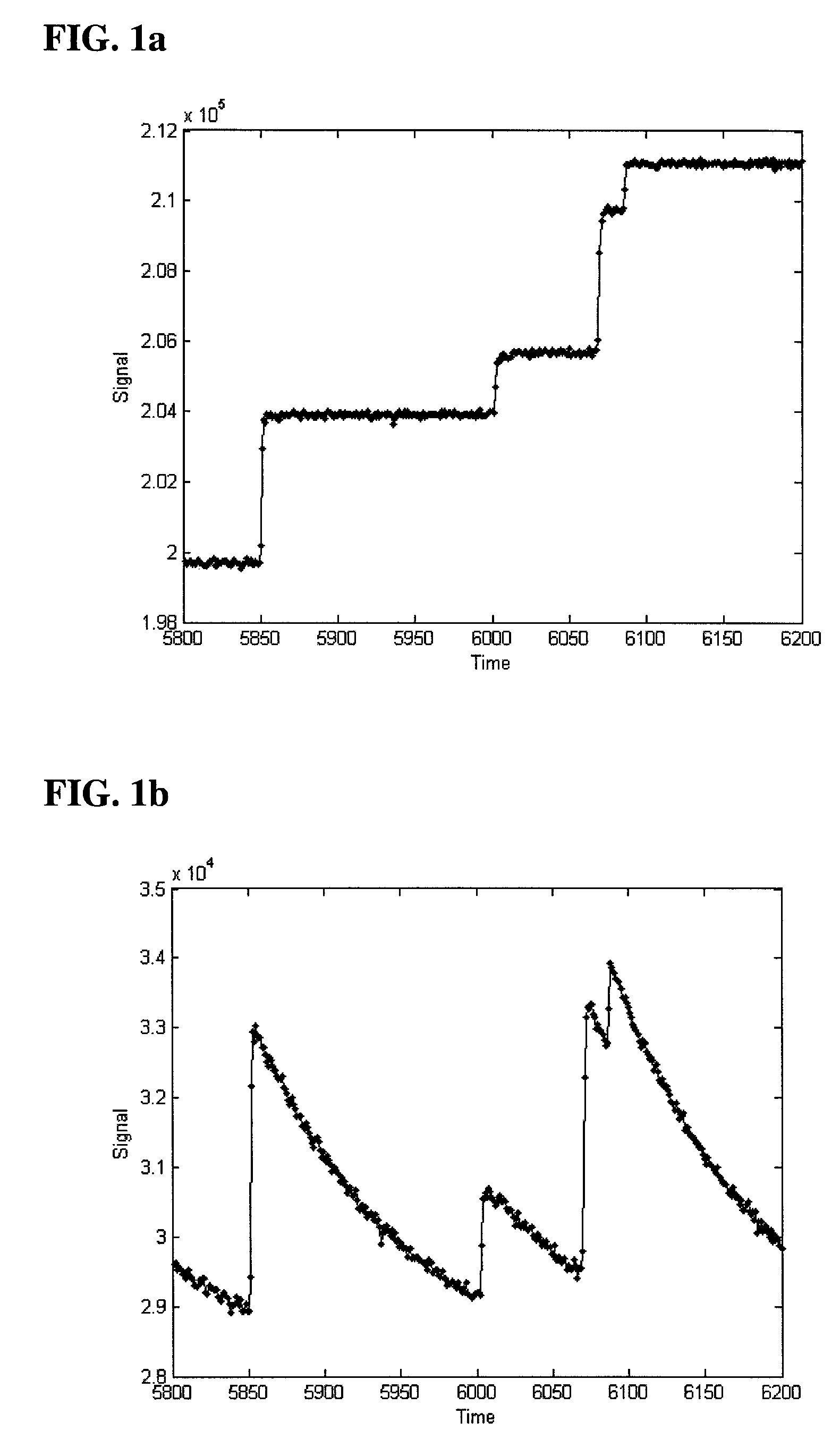Processing of spectrometer pile-up events
a technology of spectrometer and event, applied in the field of processing of spectrometer pile-up events, can solve the problems of high resolution, difficult to accurately measure photon energy, and inability to achieve high resolution, so as to increase the number of counts, increase the statistical reliability, and increase the effect of throughpu
- Summary
- Abstract
- Description
- Claims
- Application Information
AI Technical Summary
Benefits of technology
Problems solved by technology
Method used
Image
Examples
Embodiment Construction
[0038]Expanding the discussion provided in the summary above, it is seen that the invention allows use of double or other combined events—in other words, pile-up events—to generate additional useful spectral information. Since pile-up events are dead time events which are traditionally discarded, collection and use of pile-up events can increase throughput, sometimes by a factor of two or more. Thus, the invention can be used to shorten data collection times, and / or can be used to provide better statistical accuracy over a given data collection time. Both of these advantages are valuable in a wide variety of spectrometric applications including microanalysis, x-ray mapping, x-ray quantitative analysis, x-ray fluorescence, high-energy particle detectors, and security screening systems.
[0039]For clarity's sake, it should be noted that the there are multiple differing uses of the term “pile-up” in the spectrometry field, and that this document generally uses the term to refer to events...
PUM
 Login to View More
Login to View More Abstract
Description
Claims
Application Information
 Login to View More
Login to View More - R&D
- Intellectual Property
- Life Sciences
- Materials
- Tech Scout
- Unparalleled Data Quality
- Higher Quality Content
- 60% Fewer Hallucinations
Browse by: Latest US Patents, China's latest patents, Technical Efficacy Thesaurus, Application Domain, Technology Topic, Popular Technical Reports.
© 2025 PatSnap. All rights reserved.Legal|Privacy policy|Modern Slavery Act Transparency Statement|Sitemap|About US| Contact US: help@patsnap.com



